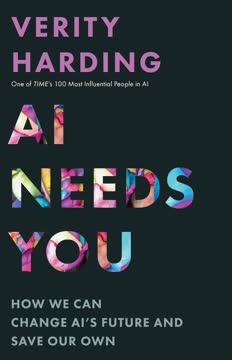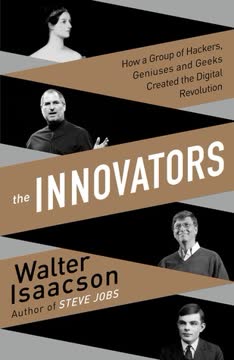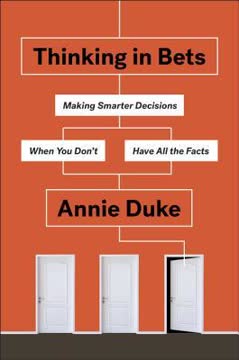Key Takeaways
1. Technological progress has historically created both winners and losers
Attitudes toward technological progress are shaped by how people's incomes are affected by it.
Progress is not inevitable. Throughout history, new technologies have often been resisted by those whose livelihoods they threatened. In preindustrial times, rulers frequently blocked labor-saving inventions to avoid social unrest. The adoption of technology depends on whether those affected stand to gain from it.
Enabling vs. replacing technologies. Economists distinguish between:
- Enabling technologies: Create new tasks/jobs, increase productivity (e.g. telescope)
- Replacing technologies: Substitute for human labor (e.g. power loom)
Replacing technologies tend to face more opposition, as they can reduce demand for labor and wages in the short-term. However, they can also lead to long-term productivity gains that benefit society broadly if the transition is managed well.
2. The Industrial Revolution initially worsened conditions for many workers
The gains of the Industrial Revolution overwhelmingly went to industrialists, who saw their rate of profit double.
Engels's pause. The early Industrial Revolution (1760-1840) saw stagnant or declining living standards for many workers, despite rapid economic growth. This period is known as "Engels's pause" after Friedrich Engels who observed it. Key impacts included:
- Displacement of skilled craftsmen by machines and unskilled factory workers
- Longer working hours in poor conditions
- Child labor in factories
- Rising inequality as profits soared but wages stagnated
Worker resistance. Many workers violently opposed mechanization, exemplified by the Luddite movement which destroyed textile machinery. However, the British government forcefully put down these rebellions to protect industrial progress.
3. The 20th century saw technology benefit workers across the board
For the most part, as late as 1970, middle-income jobs had been taken over by machines, forcing many people into lower-paying jobs or causing them to drop out of the workforce altogether.
Enabling technologies created new jobs. The Second Industrial Revolution (1870-1914) brought technologies like electricity and the internal combustion engine that created many new jobs and industries. This continued through much of the 20th century as technology augmented rather than replaced human skills.
Key developments:
- Rise of manufacturing and clerical jobs accessible to high school graduates
- Increasing wages across skill levels as productivity rose
- Expansion of the middle class and reduced inequality
- Less worker resistance to technology as benefits were broadly shared
This era saw the "great leveling" as economic gains were distributed more equally, supporting a stable democracy and social cohesion.
4. Computers and AI are now displacing middle-skill jobs
The age of automation was not a continuation of twentieth-century mechanization. On the contrary, it was a complete reversal of it.
Job polarization. Since the 1980s, computer technology has been replacing many middle-skill routine jobs while creating high-skill jobs. This has led to:
- Declining employment and wages for workers without college degrees
- Growth in both high-skill, high-wage jobs and low-skill, low-wage jobs
- A "hollowing out" of the middle class
Skill-biased technological change. New technologies increasingly favor highly educated workers, widening the gap between college graduates and others. This has contributed to rising inequality and social stratification.
5. Geographic inequality is increasing as new jobs cluster in skilled cities
Digital industries have overwhelmingly clustered in cities with skilled populations.
The great divergence. While the 20th century saw economic convergence between U.S. regions, this trend has reversed since the 1980s:
- New high-skill jobs are concentrating in cities with educated workforces
- Former manufacturing hubs are declining as routine jobs disappear
- Growing gap between thriving "superstar cities" and struggling regions
Place still matters. Despite predictions that technology would make location irrelevant, geography has become more important for economic opportunity. This is driving increased geographic segregation by education and income.
6. The shrinking middle class threatens social cohesion and democracy
A broad middle class, as many political scientists have pointed out, is an essential pillar of a stable democracy.
Political polarization. The decline of the middle class has coincided with growing political polarization:
- Fewer moderates in Congress
- Declining trust in institutions
- Rise of populist movements
Eroding worker influence. As unions have declined and corporate lobbying has increased, policies have become less responsive to workers' interests. This is exemplified by the failure to raise the minimum wage despite broad public support.
The separation of affluent and struggling communities is reducing empathy and shared experiences across class lines, threatening democratic stability.
7. Policy choices will shape whether AI benefits society broadly or exacerbates inequality
The future of AI depends on how we manage the short run.
AI's potential. Artificial intelligence could dramatically boost productivity and create new jobs, potentially benefiting society broadly as did earlier general-purpose technologies.
The challenge. However, AI also risks exacerbating current trends of job polarization and inequality if its gains accrue mainly to a small group of skilled workers and investors.
Key policy considerations:
- Education and retraining to help workers adapt
- Addressing geographic divergence
- Ensuring workers maintain bargaining power
- Considering new forms of redistribution (e.g. universal basic income)
Proactively managing the transition is crucial to realizing AI's potential benefits while minimizing social disruption. The lessons of past technological revolutions highlight the importance of inclusive growth.
Last updated:
FAQ
What's The Technology Trap about?
- Exploration of Automation's Impact: The Technology Trap by Carl Benedikt Frey examines the effects of automation on labor, capital, and society, drawing parallels between the Industrial Revolution and the current age of automation.
- Historical Context: The book provides a historical perspective on technological change, discussing societal reactions to labor-replacing technologies throughout history.
- Economic Theories: Frey explores economic theories related to technological progress, distinguishing between enabling and replacing technologies and their implications for labor markets.
Why should I read The Technology Trap?
- Understanding Current Issues: The book helps readers understand ongoing debates about automation and its workforce implications, providing insights into resistance to technological change.
- Historical Lessons: Frey offers lessons from history to guide policymakers and society in managing the transition to an automated future.
- Comprehensive Analysis: Combining historical accounts, economic theory, and contemporary examples, the book provides a well-rounded analysis of technology's societal impact.
What are the key takeaways of The Technology Trap?
- Technology's Dual Nature: The book emphasizes that technology can be both enabling and replacing, with significant implications for labor markets.
- Historical Resistance: Frey illustrates that resistance to labor-replacing technologies has been a common theme throughout history, often leading to social unrest.
- Political Power Dynamics: The book discusses how political power dynamics influence the acceptance of technological change, often favoring innovation over worker protection.
What are the best quotes from The Technology Trap and what do they mean?
- Historical Perspective: “The longer you can look back, the farther you can look forward.” This quote underscores the importance of historical perspective in understanding current technological challenges.
- Link to Social Unrest: “The sole cause of great riots was the new machines employed in cotton manufacture.” This highlights the direct link between technological change and social unrest.
- Immediate Impacts: “In the long run, we are all dead.” Frey uses this quote to emphasize the urgency of addressing the short-term consequences of automation on workers.
How does Carl Benedikt Frey define enabling and replacing technologies in The Technology Trap?
- Enabling Technologies: These enhance productivity without displacing workers, such as tools that assist workers in their tasks.
- Replacing Technologies: These take over tasks previously performed by humans, leading to job losses and often facing resistance from workers.
- Economic Implications: The distinction between these technologies has significant economic implications, particularly regarding income distribution and labor market dynamics.
What historical examples does Frey use to illustrate the technology trap?
- The Luddites: Frey discusses the Luddites, who protested against mechanization during the Industrial Revolution, exemplifying fear and resistance to labor-replacing technologies.
- Preindustrial Societies: The book examines how preindustrial societies resisted technologies that threatened their livelihoods, providing insight into contemporary fears about automation.
- Political Responses: Frey highlights how political authorities historically sided with innovators over workers, often suppressing resistance to technological change.
How does The Technology Trap relate to current debates about automation?
- Contemporary Relevance: Frey connects historical patterns of resistance to automation with current anxieties about job displacement due to AI and robotics.
- Policy Implications: The book suggests that policymakers need to consider the short-term impacts of automation on workers, rather than assuming long-term benefits will automatically follow.
- Public Sentiment: Frey notes that public sentiment towards automation is increasingly negative, reflecting a historical pattern of resistance that can lead to social unrest if not addressed.
What role does political power play in the acceptance of technology according to Frey?
- Influence of Elites: Frey argues that political power dynamics significantly influence the acceptance of new technologies, with those who stand to gain often having more political clout.
- Historical Context: The book provides historical examples of how political authorities have sided with innovators over workers, often suppressing resistance to technological change.
- Future Implications: Understanding the relationship between political power and technological acceptance is crucial for navigating future technological transitions.
How does Frey suggest we can learn from history in relation to technology?
- Historical Patterns: Frey emphasizes that examining historical responses to technological change can inform current and future actions.
- Policy Development: The book advocates for developing policies that address the short-term impacts of automation on workers, drawing lessons from past experiences.
- Balancing Interests: Frey suggests that successful navigation of technological change requires balancing the interests of innovators and workers.
What are the potential future implications of automation discussed in The Technology Trap?
- Job Displacement: Frey warns that the current wave of automation, particularly through AI, could lead to significant job displacement similar to past technological revolutions.
- Political Backlash: The book discusses the potential for a political backlash against automation if workers feel left behind.
- Need for Adaptation: Frey emphasizes the importance of adapting to technological changes by investing in education and retraining programs for displaced workers.
How does The Technology Trap address the issue of inequality?
- Wage Disparities: Frey discusses how technological advancements have led to widening wage gaps, particularly between skilled and unskilled workers.
- Impact on the Middle Class: The book argues that the decline of middle-income jobs has eroded the economic stability of the middle class.
- Policy Recommendations: Frey suggests that understanding the relationship between technology and inequality is essential for developing policies that promote equitable growth.
How does The Technology Trap suggest we can mitigate the effects of automation?
- Policy Interventions: Frey recommends implementing policies that support retraining and upskilling for displaced workers.
- Universal Basic Income: The book discusses the potential of universal basic income as a means to provide financial security for those affected by job loss due to automation.
- Strengthening Labor Rights: Frey argues for the importance of labor unions and collective bargaining to protect workers' rights in the face of technological change.
Review Summary
The Technology Trap explores the historical impact of technological advancements on labor and society, drawing parallels between past industrial revolutions and the current AI era. Frey argues that while technology can initially displace workers, it often leads to long-term prosperity. The book presents a comprehensive analysis of how labor-replacing and labor-enabling technologies have shaped economies and social structures. Readers appreciate Frey's nuanced approach to the complex relationship between technology, employment, and inequality, though some find the policy recommendations lacking. Overall, it's considered an important read for understanding the potential consequences of automation and AI.
Similar Books










Download PDF
Download EPUB
.epub digital book format is ideal for reading ebooks on phones, tablets, and e-readers.




